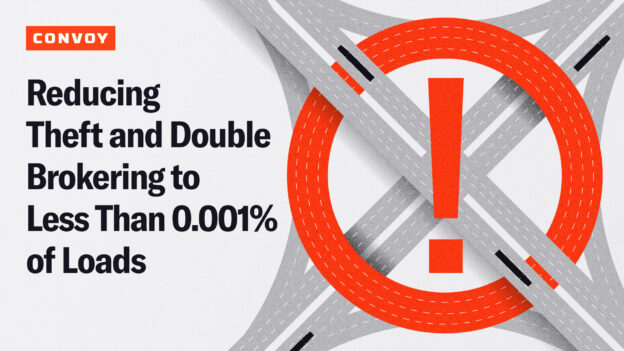10 Steps You Can Take To Make Your Organization More Sustainable
Shippers, Sustainability • Published on December 8, 2020
For those who are on a mission to protect people, planet, and profit, there is no quick-fix or single solution to check the box on sustainability. The reality is that sustainability is a marathon and not a sprint; a journey and not a destination. But there are indeed numerous ways in which every company can become more sustainable.
As part of our Business of Sustainability interview series, we gathered some insights from sustainability leaders around the country regarding how you can implement sustainable and CSR measures in your own organization right now.
- Take A Look At Where You Have Influence.
Thomas Heckroth, Director of Strategic and Responsible Sourcing at Stitch Fix, advises companies to look at where they do have the most influence and where they do have the most control. “This is the low-hanging fruit that you typically try to work with. At Stitch Fix, we know we can decide who we work with for a factory base and for our private label work. We know we have pretty good control over what decisions we can make as far as what materials we use and the packaging we decide to use. All those things are decisions that we control at its heart and so that is where we have focused our initial work.”
- Set up internal tracking mechanisms to understand where you are and where you can go.
As a start-up, Danika Padilla, Director of Social Impact at Meow Wolf notes they don’t focus on initiatives that are costly and can be really expensive. They try to focus on items that have low costs and high long-term impact. They utilize the B corp assessment as their guide because it lays out where a company can start. “Begin with the initial assessment of your organization and set reduction targets. Then look at your supply chain. Look at the internal segment and use your staff and resources to track and understand where you are at and where you can be.”
- Have a sustainability mindset at your core.
Mia Davis, Director of Environmental and Social Responsibility at Credo Beauty ensures sustainability remains core and is weaved through all of their programs. Everything from packaging take backs to composting at their headquarters to carpools and how they design stores is viewed with an eye toward sustainability. “We’re designing our stores to be as thoughtful as we can about reducing waste because when you open the store, the amount of stuff that you need and waste is painful. When you’re in the business to sell stuff, it’s inherently at odds with sustainability. We’re selling stuff and opening stores and shipping things around the country. We’re trying to make sure we’re really threading that through at the store level, at the HQ level and then, with our brand partners influencing the supply chain to be more sustainable.”
- Start small and keep building.
Tiila Abbitt, Founder & CEO of Aether Beauty believes as a brand you should start small and keep building. Instead of having crazy goals in four or five years that you have no idea how you are going to achieve, it’s a little bit more realistic to affect things you can affect and then keep growing versus over promising and under delivering. “At the end of the day, if you disappoint a client or create a conversation of untrust, it is very hard to get that client back.”
- Consider inputs, outputs, and outcomes.
Amy Blyth, Director, Program Development and Partnerships at Fair Trade USA thinks about impact, monitoring, and evaluation. “Look at what your program does, what outcomes you hope to see, and impacts you expect to see from the interventions you do.” She advises to first think around inputs and outputs, and then go to outcomes. “Think about what it is you are directly going to do that is going to drive direct outputs, and then create medium-term and long-term outcomes for communities, the marketplace, and individuals. And from there with all those different inputs, outputs, and outcomes, you put indicators to them so you can actually track, are we actually doing those inputs effectively that we think we are doing, or we say we’re doing? Are we actually seeing the outputs that we hoped to see or expected to see from our ecosystem? And then start to track those outcomes.” Perfect examples from an inputs perspective are time, resources, audits, certifications, and then what you hope to see as outputs and how you can track those outcomes to see if you are actually moving the needle on the things you expect to see from your interventions.
- Review product innovation, efficiency, store design, labor, etc. through a sustainability lens.
Christine Riley Miller, Global Director of Sustainability at Samsonite states that sustainability drives product innovation for Samsonite. “It’s really about how we look at product innovation and material sourcing through the lens of sustainability. How do we design for repairability and durability? How do we design for recyclability? How do we improve efficiency across our manufacturing and distribution centers? What can we do to retain world-class employees?” Since 2017, Samsonite has launched more than 50 collections which have some type of sustainable material. The company’s use of recycled PET has enabled Samsonite to divert more than 52 million plastic bottles from the landfills. “Even our product designers are constantly sharing innovative ideas around how we increase the repairability of our products and how we increase the durability of our products so a suitcase is going to last longer. We look at things where if a suitcase breaks, we can have a customer repair it and not have to replace it, which keeps a lot of luggage out of the landfill. When we design our stores, we look at lighting in the stores. LED lighting might seem like a small impact for one individual store, but when you look at it across the entire company footprint, it’s a pretty significant impact on our overall carbon footprint.”
- Begin with a materiality analysis.
A materiality analysis is a method to identify and prioritize the issues that are most important to an organization and its stakeholders. Katherine Pickus, Vice President of Global Sustainability at Griffith Foods advises this is a great place to start. “What are your concerns as a company? What are the expectations you perceive as your contributions to society? What are your risks? Where are your opportunities to create value or preserve value? It can be a really interesting exercise as part of what people were looking for versus what really matters. And then you can do it externally and ask people ‘what are your expectations of us and how will we meet those expectations?’” The materiality analysis identifies the issues you want to tackle, which then lead to a framework for sustainability. Then you take that framework and create a roadmap, a strategy, and key goals and metrics to share with customers, as well as other suppliers so you have a real-world, vast sustainable value chain that’s mapping your environmental, social and governance.
- Identify Zero Cost Opportunities.
Julie Verdugo, Director of Sustainability + Social Impact at Free People notes that right now so many companies are having a hard time because of COVID so the large investment piece is not realistic. “In reality, a lot of us actually have a lot of zero cost opportunities and even cost saving in some instances.” For example, right now many companies are sitting on inventory of unsold products. This should be viewed as an opportunity to develop a new little business channel in a sustainable way. A lot of energy reduction programs are actually cost savings as well — they just take the time and require the brain power to identify. “Sustainability teaches so many things to so many people and crosses so many different functions. Start with a little task force and then start getting creative by saying, ‘We don’t have any budget for this, what are some cost savings initiatives or net zero initiatives that we could start on?’ And there’s a lot of impact behind those too. Look at many different things. Kilograms of CO2, or saving a number of bags from hitting the landfill, it can be a number of volunteer hours, an increase in wages for certain workers, and it’s basically a massive impact tracker of lots of different metrics and lots of different forms of impact. We had a paper reduction initiative that we started internally. It feels very small and every day we communicate the whys behind keeping communication digital. We set goals of saving trees for pages not printed and while it sounds small, everyone started to think a little bit differently, and we noticed we were saving a couple of trees a week. And sharing that information with the employee base motivated them further and then we saw an increase in overall paper reduction over time.”
- View Things From A New Perspective.
Annie Agle, Senior Director, Corporate Social Responsibility at Cotopaxi advises viewing everything you do from a different perspective. “Historically, when Cotopaxi has a shipment of goods that’s been damaged, the only avenue to make an insurance claim and getting money back for that damaged product is to show proof of destruction, which means literally lighting your product on fire. Cotopaxi had an ocean shipment that was water damaged and our supply chain manager, Danny, said, ‘You know, the insurance company is telling us to destroy it and show pictures of destruction and I just can’t do that. We can’t do that as a company. That’s not who we are.’ So we reached out to our logistics and bulk shipment provider, Flexport, and said, ‘Can we work with you guys around an alternative? We can’t destroy these products. What if we try to find a way to donate as opposed to destroy?’ And working closely with Flexport and interviewing some alternative insurance companies and insurance providers, we were able to create a path where donation did satisfy the requirements for an insurance claim, which also opens up the same path for other companies. And that’s an example of how putting your foot down around sustainability and being willing to be nimble and being willing to hold your line from wherever you’re at in the global economy can really make a difference much bigger than yourself.”
- Establish what sustainability means to you.
Harshad Kanvinde, Practice lead – Strategy & Supply Chain, Slalom Consulting, believes you need to start now with a baseline understanding of your capabilities and what goals make sense to you. “Sustainability is not an overnight thing. It takes time, blood, sweat, and tears to go through the experiences firsthand. Also, if you think about sustainability as something that you have to do because someone else is asking, that path only leads to failure and frustration. Even on day one as you start thinking about sustainability, keep the customer front and center, or for that matter, your other stakeholders. Your employees and your communities that you operate in and it has to make sense. It has to be an ‘Ah ha!’ I get it. It should not feel like a band-aid. If that’s the message, then things become easier. If you are a manager in the business, start thinking about the things you are impacting day to day and what sustainability means. Start thinking about specific products, specific customer segments that you serve and their problems and how a sustainable solution, a sustainable supply chain helps solve those specific problems.”



